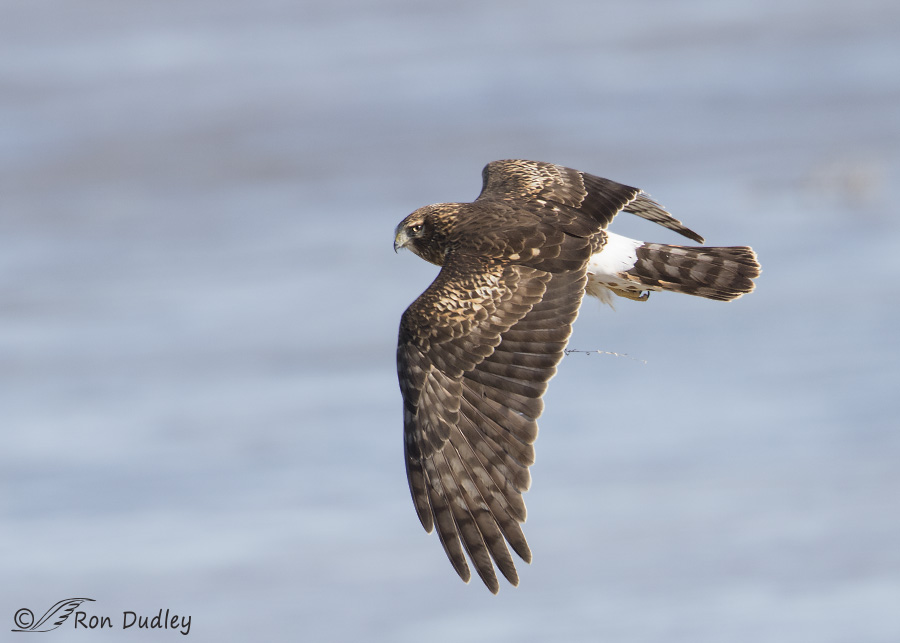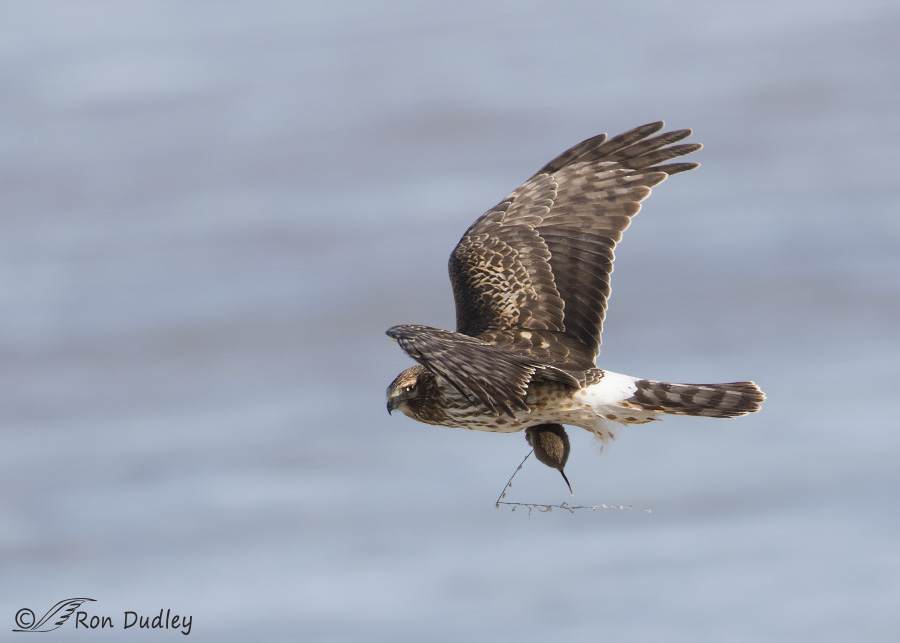Sometimes birds are cooperative when they aren’t…

1/1600, f/6.3, ISO 500, Canon 7D Mark II, Canon EF 500mm f/4L IS II USM + 1.4 tc, not baited, set up or called in
Yesterday morning there was a quartering north wind along the Antelope Island causeway which slowed this Northern Harrier down as it came toward me along the north side of the road. Its slow flight and bravado as it approached me closely provided some excellent photo ops but they were mostly stymied by the consistent flight posture of the hawk in the wind. The bird’s left wing nearly always hid or shaded the head and eye because it rarely flapped or raised its outstretched wings. Here the bird banked slightly which gave me a nice look at the lowered left wing and at least some light on the face and eye.
One distraction is the plant stem trailing from the left wing. What could cause it to stick to the smooth surfaces of the middle of the wing like that?

1/1600, f/6.3, ISO 500, Canon 7D Mark II, Canon EF 500mm f/4L IS II USM + 1.4 tc, not baited, set up or called in
The answer is revealed in the very next image. The broken stem isn’t stuck to the wing, instead the harrier has a vole in its clutches and the little rodent has a literal death grip on the stem. The shadow on part of the face and the beak is a little annoying but at least there’s light on the eye.
Both of these images illustrate one of the challenges of photographing harriers – that bright white rump patch. In these photos the patch is almost directly facing the sun which makes it very bright with little detail. Those whites aren’t blown but they’re a little brighter than I like them to be.
Ron
Notes:
- The background in these images is ice on the mudflats of the Great Salt Lake
- For any who may be wondering after yesterday’s post, I’m scheduled to get my pickup out of the shop this afternoon. When I do my soul will be whole again… Goodbye Tonka Toy Kia rental!


Ron, I am enjoying your post everyday. I am curious how close you are to the birds to get such detail. I am failing miserably in my attempts.
Stephen
Thanks, Stephen. Closeness to my subjects varies considerably from image to image. The quality (or lack thereof) of the lens used to make the image is huge in getting good detail.
Wind? A strong wind makes me feral. Like children in the playground. Years back we had a cat who, on a very windy day, ran up a tree and bit it. I knew how he felt.
Love your harrier. And the death grip of that poor vole.
Yay for the return of your other limb. No more tonka cars….
I just got home with my repaired pickup a few minutes ago, EC. Happy day!
You’re probably right..not too crazy about Wyoming’s winds, either…not crazy about being bitten to the bone or freeze dried by constant wind…but love MOST “friendly” winds…esp. When I’m dressed for it and it isn’t constant…my favorites are the “soft, warm, strong” winds of Spring,Fall and Florida….
I LOVE wind! When I learn to fly, I’m going to play in it for hours!!!
You likely wouldn’t be so fond of wind if you’d grown up where I did in Montana.
Once again, I feel so darned sorry for a danged vole…just can’t help it!!!
You’re just an old softie, Patty…
Definitely old!
Absolutely great shots Ron, regardless of the shadows!
As you probably have guessed, I lean toward behavior shots more than artistic shots. But, I have to admit for most of your shots and especially this first image, the look she is giving you needs a caption.
“You got it that I caught the Vole? Right? Damn straight!”
Dick, I think you know that I’m a huge fan of behavioral shots too, in fact I probably prefer them if they’re done well. That’s usually hard to do though.
These photos are thrilling, Ron. They make me feel as if I have taken flight. Thank you for giving us all new eyes to see our world.
I’m glad you liked them, Elizabeth. Thanks.
Beautiful shots, Ron! The hidden vole sure created a mystery for a bit. Sometimes the wind is helpful. Glad you’re getting rid of the “Tonka Toy”
The hidden vole sure created a mystery for a bit. Sometimes the wind is helpful. Glad you’re getting rid of the “Tonka Toy” 
Judy
Yep, the wind can be a mixed blessing, Judy. Most birds hunker down in it but some raptors like to “play” in it and wind can slow them down in the right situation.
Wonderful shots Ron! Thanks for sharing!
Charlotte
Thank you, Charlotte.